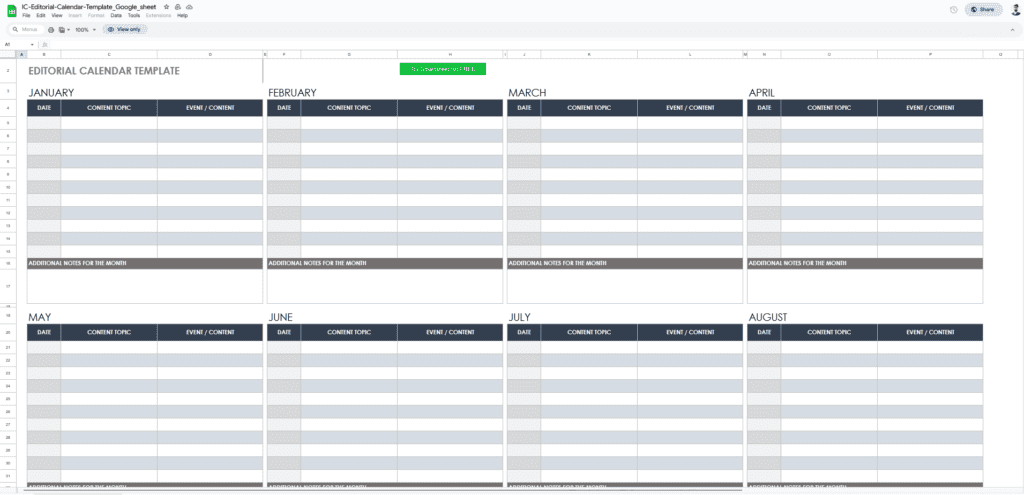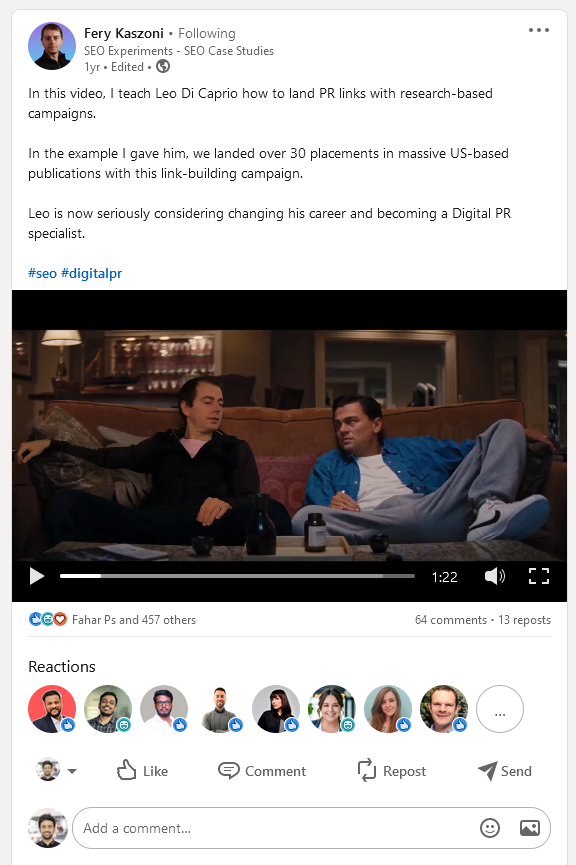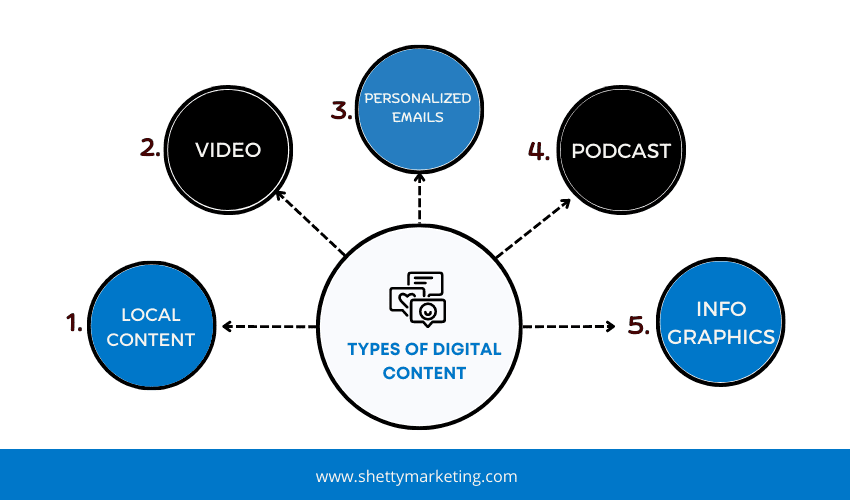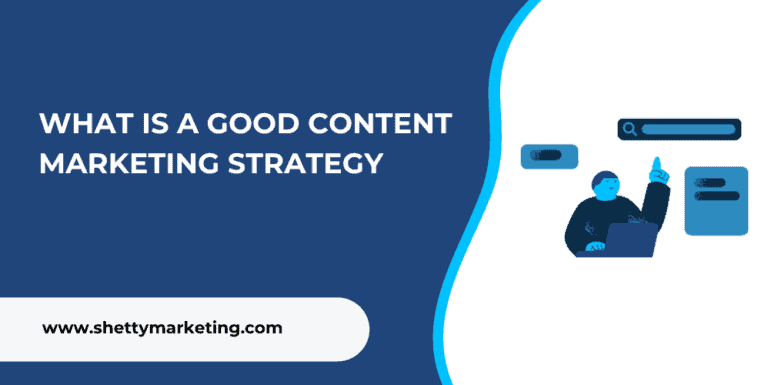A good content strategy goes beyond simply sharing random third-party content on social media platforms.
I quickly learned this lesson when I started my journey in content marketing. Initially, I believed that flooding my brand’s social channels with any content would increase brand presence and engagement.
However, I soon realized that creating valuable content is the key to solidifying the brand image in the eyes of the target market.
The best content strategy is to create pillar content and repurpose it for other platforms. For example, I would write a long-form whitepaper or shoot a video as the primary piece of content. From there, I would break it down into smaller fragments, or what I like to call content splinters and distribute them across different channels. This saves me a significant amount of time while still reaching a wider audience.
As a content creator, it is essential to decide the modality of your content. Should it be a video, long-form written content, or even audio? Once I have the pillar content ready, I plan my editorial calendar accordingly. I assign a specific theme for each week, or sometimes even bi-weekly themes. This helps maintain consistency and ensures that my content aligns with my business goals.

Use the Smartsheet template seen above to track content production, due dates, and events. It includes an annual calendar, a month-by-month view, content brainstorming, and a content archive. Plan content, assign tasks, and set deadlines effortlessly.
Regular content audits are also crucial in a good content strategy. At least once a month, I review and evaluate the performance of my content.
Google Analytics and search console are invaluable tools for measuring content performance, as they provide insights into the effectiveness of my content marketing efforts.
In essence, a good content strategy involves creating high-quality content that resonates with my target audience. It requires careful planning, repurposing, and distribution across various channels. By following this approach, I have seen my content not only reach a wider audience but also contribute to achieving my content marketing goals.
How do I make valuable content?
Valuable content is something that has been talked about a lot lately, especially on platforms like LinkedIn and Twitter.
Many ghostwriters mention it as a key ingredient for success, but what exactly is valuable content? Well, it’s actually quite simple.
Valuable content is unique and original. It’s something that stands out from the crowd and offers a fresh perspective.
But how do you make valuable content?
Contrary to what some gurus might say, there’s no need to follow a template or formula. Instead, use your creativity to make something that stops the reader from scrolling.
Add a storytelling angle to your content and share your own perspective. This will give your content a personal touch and make it more engaging.
Don’t be afraid to be different and think outside the box. Valuable content is not about following trends or copying what others are doing. It’s about offering something that is truly useful and interesting to your audience.
So, the next time you sit down to create content, think about what makes it valuable. Make it unique, add your own touch, and most importantly, make it something that your audience will find “valuable” and worthy of their time.
What is an example of valuable content?
One example of valuable content is a LinkedIn post by Fery Kaszoni, the Managing Director of Search Intelligence LTD, a digital PR link-building agency.
In this post, Kaszoni explains PR link-building to Leo DiCaprio. Although he didn’t get Leo to do the video, he utilized creativity and technology to make it happen.
The result? The post gained the traction it deserved.

Posts like these serve as inspiration for business owners and content creators. They show how you can think outside the box and use innovative strategies to create content that makes readers stop and think.
Valuable content is not just about promoting products or services; it’s about providing meaningful and informative content that grabs the attention of your target audience.
What type of digital content should I create?

When it comes to creating digital content, it is important to have a varied and comprehensive strategy.
While it may seem tempting to be present on every platform and create content in every format imaginable, it is more efficient and effective to focus on creating a few key pieces of pillar content and then repurpose them into multiple splinters.
So, what type of digital content should you create?
Well, there are several options to consider :
1. Local Content
Creating local content is an effective content strategy that can help businesses expand their brand reach and connect with their target audience on a more personal level.
One way to do this is by working with local public relations companies and utilizing local press releases. This approach allows businesses to tap into the knowledge and expertise of these organizations to create relevant and engaging content specifically catered to the local community.
Once the content is created, it can be repurposed as social media posts to amplify its reach and engagement further. With the increasing popularity of social media platforms, businesses have the opportunity to connect with their potential customers through different channels, such as Facebook, Instagram, Twitter, and LinkedIn.
By repurposing local content into social media posts, businesses can showcase their expertise, share valuable information, and engage with their audience in a more interactive and dynamic way.
2. Shoot Videos with micro-influencers
When it comes to reaching a wider audience, one effective strategy is to shoot videos and collaborate with micro-influencers.
Videos are highly engaging and can capture the attention of potential customers more effectively than other types of content. By working with micro-influencers, who have a smaller but highly dedicated following, businesses can tap into niche markets and attract a more targeted audience.
Videos can be used to showcase product demonstrations, share customer success stories, or provide valuable educational content.
Additionally, collaborating with micro-influencers allows businesses to leverage the influencers’ credibility and credibility and reach their audience in a more personal and authentic way.
To successfully implement this strategy, it is important to conduct thorough research and identify micro-influencers who align with your target audience and brand values.
Creating a content calendar and establishing clear goals for each video will help ensure consistency and strategic content creation.
3. Personalized email marketing
Personalized email marketing is a powerful tool in today’s digital landscape.
While following a template can save time and effort, there are significant benefits to crafting personalized emails that speak directly to the recipient.
One of the main advantages of personalized emails is the ability to establish a genuine connection with the reader.
By tailoring the content to their specific needs, interests, and pain points, you demonstrate that you understand them as an individual.
This personalized approach makes the recipient more likely to engage with your email and take the desired action.
Another key aspect of personalized emails is the conversational tone. Unlike template-driven communications, personalized emails can be crafted to sound like a conversation between two people. This creates a human touch that resonates with the recipient and helps build trust and rapport.
By using personalized emails, you can address the recipient by name, reference previous interactions or purchases, and provide relevant recommendations or offers.
This level of personalization shows that you value their preferences and are genuinely interested in meeting their needs.
4. Infographics
Infographics have become increasingly popular for businesses to effectively communicate information visually.
In a world where users are constantly bombarded with text-based content, many prefer consuming information through visually appealing graphics.
One advantage of using infographics is their ability to present complex data in a simplified and easy-to-understand format.
By using visual elements such as charts, graphs, and diagrams, businesses can present information in a way that is both engaging and informative. This makes it easier for users to comprehend and retain the information being presented.
Moreover, there are numerous infographic websites available through which businesses can share their visual content and grab the attention of their target audience.
These platforms allow businesses to showcase their infographics to a wide range of users who are actively seeking visual content. By leveraging these platforms, businesses can increase their brand visibility and reach a larger audience.
5. Podcasts
Podcasts have become a popular and effective tool for content strategy, providing businesses with a valuable platform to share knowledge and connect with their audience.
One way to leverage podcasts in your content strategy is by interviewing industry experts. This allows you to tap into their expertise and provide your audience with valuable insights from someone who is highly knowledgeable in the field.
By picking the brain of an expert, you can offer unique and engaging content that sets you apart from your competitors.
Furthermore, podcasts also offer the opportunity to interview current clients and share their success stories with your company.
This not only creates a sense of credibility and trust but also allows potential customers to see firsthand the positive experiences others have had with your products or services. These success stories can help generate new leads and conversions by showcasing the value your business provides.
When incorporating podcasts into your content strategy, it’s essential to have a clear plan and schedule in place.
Develop a content calendar that outlines the topics, guests, and release dates for each episode. This will help you stay organized and ensure consistency in your podcasting efforts.
Additionally, promote your podcasts across various distribution channels such as your website, social media platforms, and email newsletters to maximize your reach and engagement.
Read more: Does digital marketing work for all businesses(and does it fall under your budget?)





